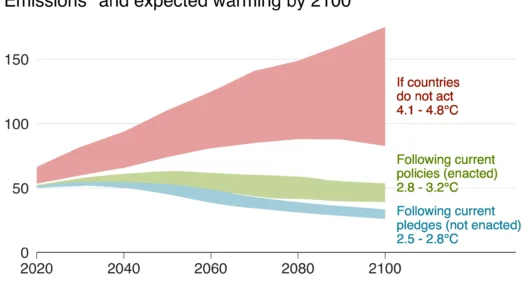In recent years, global warming has emerged as one of the most pressing challenges of our time. As the planet warms, the consequences become increasingly dire, from rising sea levels to extreme weather patterns. It begs the question: How can we leverage the power of chemistry and innovative clean energy technologies to surmount this formidable obstacle? This exploration delves into the intersection of chemistry and clean energy, examining current advancements and the overarching potential they hold in combating climate change.
The role of chemistry in developing sustainable energy solutions cannot be overstated. From photovoltaic cells harnessing solar energy to innovative methods of carbon capture and storage, chemistry provides the foundational framework for many clean energy technologies. The task at hand is not merely scientific; it is also monumental. Are we ready to embrace these innovations fully, or will complacency hold us back?
To comprehend the impact of chemistry on clean energy, it is essential to dissect various avenues currently under exploration. For instance, solar energy is one of the most promising alternatives to fossil fuels. Advanced solar panels utilize semiconductor materials to convert sunlight into electricity efficiently. Chemistry allows scientists to engineer these semiconductors at the molecular level, enhancing their efficiency and reducing their costs. Improvements in materials science have resulted in perovskite solar cells, which promise higher efficiency rates than conventional silicon cells. Although still in the research phase, these cells could be a game-changer for affordable renewable energy.
Wind energy represents another crucial sector where chemistry plays a significant role. The materials used in wind turbine blades—often composed of advanced composites—are selected through a profound understanding of chemical properties. The durability and efficiency of these materials enable wind turbines to generate energy more effectively. Consequently, wind energy has become one of the fastest-growing sources of energy in the world. Yet, despite significant advancements, how do we address the lifecycle impacts of these technologies?
A pertinent challenge lies in the production and disposal of clean energy technologies. As the demand for batteries escalates—especially with the rise of electric vehicles—concerns about lithium extraction and environmental degradation surface. However, chemistry is also paving the way for sustainable solutions in this arena. Researchers are exploring alternative materials such as sodium-ion batteries, which could mitigate environmental ramifications. The revitalization of old technologies and the innovation of new ones hinge upon understanding and re-engineering chemical reactions.
Furthermore, the concept of energy conversion draws on chemical principles to generate fuel using solar energy. Artificial photosynthesis is one such innovative endeavor aimed at mimicking the natural photosynthesis process in plants, which transforms sunlight, water, and carbon dioxide into energy. Scientists are investigating catalysts that facilitate these reactions efficiently and sustainably. The potential to produce carbon-neutral fuels through this methodology could revolutionize the energy landscape and significantly curtail greenhouse gas emissions.
Another compelling innovation is the development of biofuels from algae. Algae can simultaneously utilize carbon dioxide and sunlight, transforming them into energy-rich compounds that can serve as an alternative to traditional fossil fuels. Researchers are employing biochemical processes to maximize algal yields and optimize conversion efficiency. Could this represent a panacea for our reliance on fossil fuels, or are there limitations to its scalability?
Carbon capture and storage (CCS) techniques also signify a formidable chemistry-based response to climate change. These technologies involve capturing CO2 emissions from power plants and industrial facilities, then sequestering this greenhouse gas in geological formations. Recent advancements in catalytic processes and materials have improved the efficiency and feasibility of CCS systems. However, the effectiveness of this approach depends on widespread implementation and regulatory support. Will society rally behind such initiatives, or will inertia prevail?
In addition to these technology-driven solutions, chemistry is pivotal in devising strategies for enhancing energy efficiency. The design of energy-efficient buildings employs chemical insights to create insulation materials that minimize heat loss. Innovations like phase change materials capture and store thermal energy, thereby optimizing energy consumption in HVAC (heating, ventilation, and air conditioning) systems. The amalgamation of chemistry and engineering creates insights that could lead to a paradigm shift in how we design and utilize our environments.
The future trajectory of clean energy innovations will also be influenced by the circular economy paradigm. Designing processes that allow for the recycling and reusability of materials ties back to chemistry. How can we synthesize products that lend themselves to a closed-loop economy, minimizing waste? This represents a profound challenge but also a significant opportunity rooted in chemical ingenuity.
Global warming is an extraordinary challenge requiring extraordinary solutions. As chemistry continues to unearth and implement innovative clean energy solutions, the onus falls upon society to embrace these advances with zeal and commitment. The interplay between chemistry and renewable energy may hold the keys to a sustainable future. Moreover, the journey ahead necessitates collective responsibility and alignment across all sectors of society. Whether through advancements in material science or innovative methods of energy production, each step taken nudges closer to a more sustainable world.
Continuing to explore how chemical innovations can drive our transition to clean energy will be a defining aspect of the fight against climate change. Are we prepared to utilize these advancements to their fullest potential, or will we become stagnant in the face of unprecedented climatic threats? Answering this question could very well shape the future of our planet.







